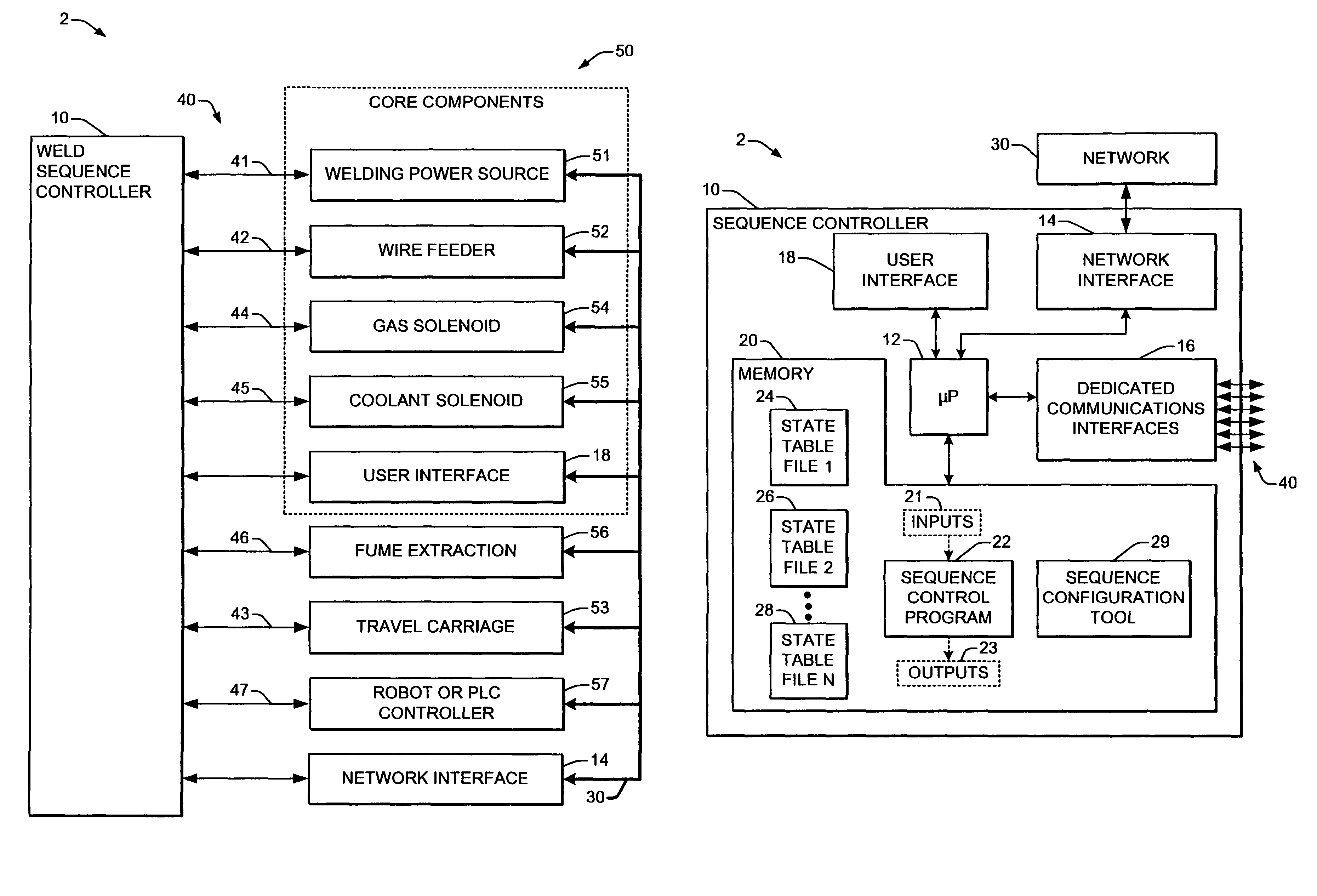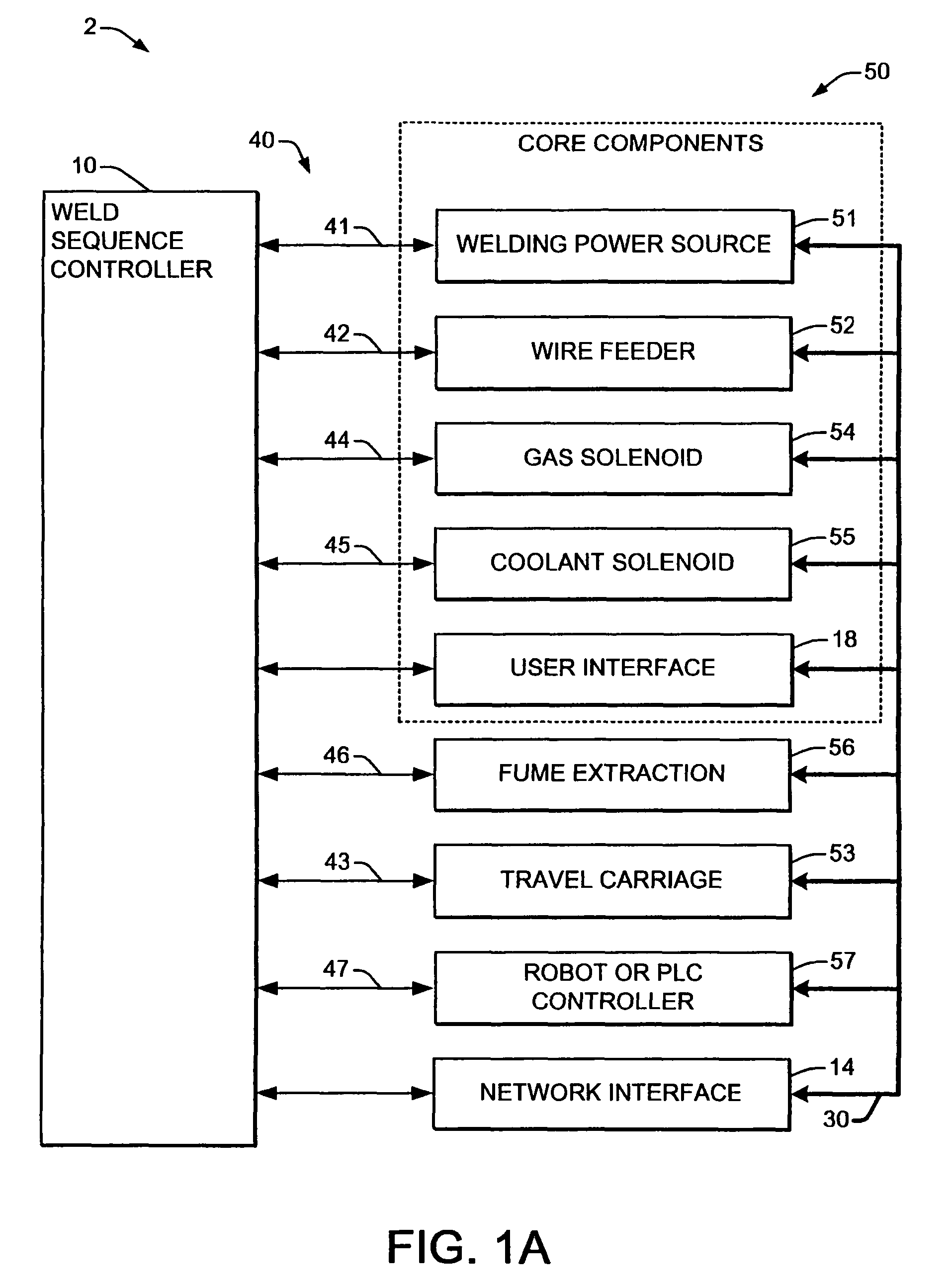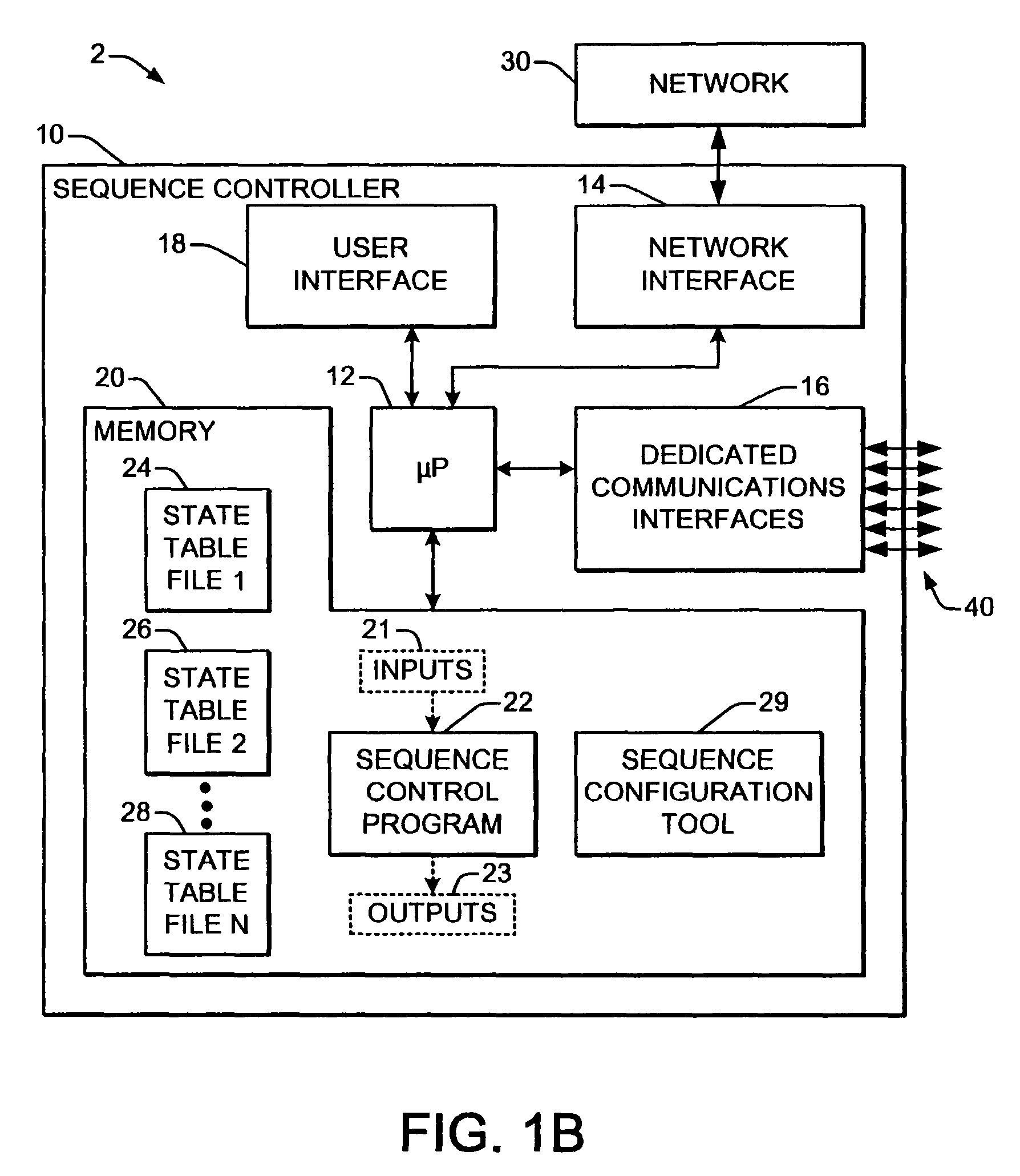Welding system sequence control apparatus
a welding system and sequence control technology, applied in the field of arc welding, can solve the problems of difficulty in modifying, predefined basic functionality, and difficulty in welding system operators, and the present welding system sequence controller does not allow easy refinement of welding processes
- Summary
- Abstract
- Description
- Claims
- Application Information
AI Technical Summary
Benefits of technology
Problems solved by technology
Method used
Image
Examples
Embodiment Construction
[0023]One or more embodiments or implementations of the present invention are hereinafter described in conjunction with the drawings, wherein like reference numerals are used to refer to like elements throughout and wherein the illustrated structures are not necessarily drawn to scale. The invention relates to controlling the sequence of welding operations in a welding system, where easily reprogrammable sequence controllers allow system reconfiguration without recompiling executable code or hardware modifications. The various aspects of the invention are generally applicable to welding systems, which as used herein, refers to systems that may be used to perform welding operations, cutting operations (e.g., plasma cutters, etc.), or other forms of arc processing. Thus, while illustrated and described below in the context of specific welder examples, the invention is not limited to the illustrated examples.
[0024]Referring initially to FIGS. 1A-2D, an exemplary arc welding system 2 is...
PUM
| Property | Measurement | Unit |
|---|---|---|
| current | aaaaa | aaaaa |
| Electric | aaaaa | aaaaa |
| feed speed | aaaaa | aaaaa |
Abstract
Description
Claims
Application Information
 Login to View More
Login to View More - R&D
- Intellectual Property
- Life Sciences
- Materials
- Tech Scout
- Unparalleled Data Quality
- Higher Quality Content
- 60% Fewer Hallucinations
Browse by: Latest US Patents, China's latest patents, Technical Efficacy Thesaurus, Application Domain, Technology Topic, Popular Technical Reports.
© 2025 PatSnap. All rights reserved.Legal|Privacy policy|Modern Slavery Act Transparency Statement|Sitemap|About US| Contact US: help@patsnap.com



